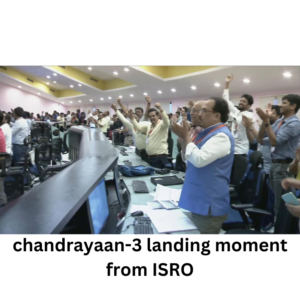Chandrayaan-3 Makes History In Space, Why Does Landing On The South Pole Matter?
4 min readAug 24, 2023

On August 23, 2023, at 6:03 p.m. IST, India’s Chandrayaan-3 lunar mission made a successful landing on the moon. With this remarkable accomplishment, India has joined the United States, the former Soviet Union, and China as the fourth country to have successfully landed on the Moon. However, none of them have reached the South Pole.
In 2019, India also exercised its military space prowess by firing a missile at a satellite, showcasing its capacity to take aim at its enemies’ space assets.
Making history is Chandrayaan-3.
On July 14, when the spacecraft launched from Sriharikota, the Chandrayaan-3 journey began from Earth. Then, on August 5, it was placed into the lunar orbit after a few orbit-raising maneuvers. Before touching down on the Moon, the spacecraft gradually drew closer to the surface.
A similar mission in 2019 that was about to fail due to a software issue needs your assistance. Modi promised that the nation would not give up after the failed landing attempt in 2019. We were really close, he said. “We’re even more determined than ever to reach the moon. However, the mission was successful in placing a spacecraft in lunar orbit, and it has since been doing so while mapping the moon’s surface.
Pragyaan, the Sanskrit word for wisdom, is the name of the 26 kg moon rover and Vikram lander that are part of the spacecraft. rover that will conduct experiments on the Moon to look for signs of frozen water and to learn more about the unexplored polar region Chandrayaan-3.
There will be two weeks for the lander and rover to conduct their evaluations on the Moon. Scientists are particularly interested in the south pole because Chandrayaan-1 discovered evidence of frozen water on the moon’s far side, which could support a base in the future and enable astronauts and scientists to work there for extended periods. due to a phenomenon known as “Tidal Locking,” it cannot be seen from Earth. ” Chandrayaan-3.
Water ice from long ago may contain information about comets and asteroids that came to Earth, as well as about lunar volcanoes. It will also contribute to clarifying how oceans form. For upcoming crewed missions to the Moon, this ice from the lunar south pole might be used to extract fuel, oxygen, and water.
The main goals of Chandrayaan-3 are to demonstrate a soft and safe landing on the moon’s surface, to show how to move a rover around the moon, and to carry out in-situ scientific experiments.
Prime Minister Narendra Modi waved an Indian flag while Sreedhara Somanath, the head of the India Space Research Organization, proclaimed: “India is on the moon.”

